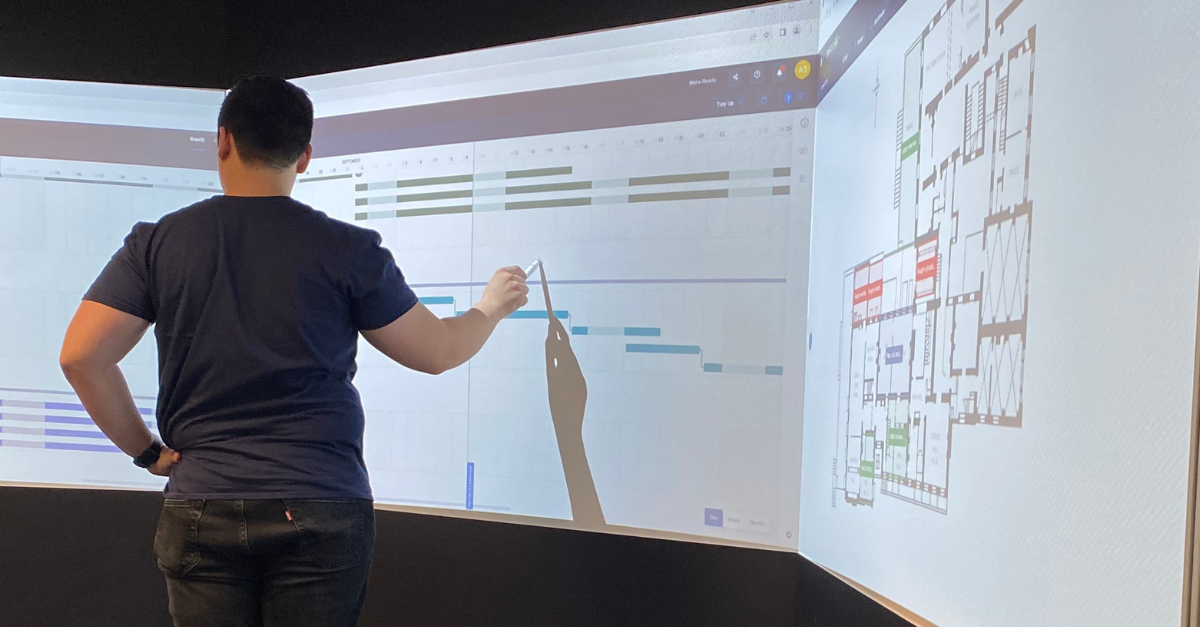If you're responsible for managing a project delivery team or aspire to be, chances are you've wondered what things you could be doing to drive productivity.
You want your projects to be successful, delivered on time, and within budget. And for that, you need motivated team members, solid plans, processes, and a way to track your progress.
But where to start?
Whether you're at the beginning of a new project or want to improve your team's performance on a current one, these five actionable steps will help.
Have your team own their plans
Giving engineers the ability to build their own short-term plans, set their own targets, and take accountability for their work helps improves site performance and avoid potential delays.
Teams that do this well always have a solid process in place that looks something like this:
- Engineers are provided with a copy of the master schedule in Oracle P6, Asta Powerproject, or Microsoft Project
- Each engineer builds a short-term lookahead plan that they are accountable for
- They then build a weekly routine around a cycle of planning updates, collaborative reviews, commitments, and circulation of the updates
- Those same weekly cycles are then used to identify early indicators of project performance
The reason this works so well is that teams can identify potential issues sooner and plan in a more agile manner. Not only that, but by empowering the people responsible for delivering projects to build their own plans and be held accountable for outcomes, you encourage a deeper level of commitment.
.gif?width=597&height=312&name=Accountability%20%20(1).gif)
Put routines and processes in place
Having your team build and own their own plans benefits the whole project and everyone on it. But providing teams with clear support and structure keeps everything running smoothly.
Reporting Routines
A well-thought-out reporting routine will allow you to build and manage more effective lookahead plans. And having a series of regular, scheduled meetings throughout the week makes it easier for teams to communicate with each other, identify potential problems and improve site performance.
Psst…Check out this article if you're not familiar with weekly reporting routines.
An example routine might look something like this:
Start of the week
Share and review the previous week's performance stats
Throughout the week
Team coordination meetings
End of the week
Update plans and share them with stakeholders
Failsafe processes
Is there a clear process for all of the problems that your team faces? If something unexpected happens, or there's an emergency in the middle of the night, does everyone know what they need to do?
Construction sites can be unpredictable, and ensuring a well-communicated plan of action helps the whole team stay on top of the project.
Ensure clear communication
Good, clear communication is key to the success of a construction project, but not everyone has a shared opinion of what good communication looks like. That's why it may be helpful to establish some basic ground rules and structure for communications relating to your project.

- Establish a chain of command
Whilst this might seem quite obvious (with contracts and job titles), it may get a little blurry when working with new team members or people from outside your team. Drawing up a clear chain of command and ensuring everyone is aware of it can help avoid confusion.
- Clarify how messages should be delivered
Making it clear that updates should be sent to a particular email can help make it easier to stay on top of things.
- Keep written communications professional
By setting the tone for project communications, you can avoid unnecessary waffle and potential workplace dramas. No one wants an argument breaking out in the team WhatsApp group.
Provide the right set-up
If you've worked across a few different projects, you'll already know how much of a difference the right site infrastructure, equipment, and software can make. So it's worth giving some serious thought to the resources that are available to your team.
Build a great War Room
A War Room is a great place to review, discuss, and visualise your plans. So making sure yours is set up properly can make a significant impact on your team's performance. Consider where the room is based, how comfortable it is and whether it has sufficient equipment.
For example, could a 360-degree projector or digital display board help visualise the project better and improve your plans? Would an extra heater or fan help people focus more? All of these things add up to make a significant impact.
Software
Thanks to construction tech advancements, many old processes have been improved and made faster. Acquiring new software and getting your team trained might seem like a pain it's worth it in the long run.
Mapping tools, site diaries, and scheduling software like Aphex are all available to help you complete tasks faster, reduce friction between team members, and manage your project more efficiently.

Track performance
Without tracking your team's performance, it's impossible to figure out how well things are going. Fortunately, if your team are building short-term plans and you have a weekly reporting routine in place, then tracking your performance is relatively straightforward.
Some more popular metrics include:
Milestones
Think start, end, sectional completion and handover dates. Tracking variance on a spreadsheet will give you an indicator of how far behind, or ahead, of schedule you are.
Earned Value Management
Regularly comparing the initial budgets and time frames (from the work breakdown structure) to the actual work completed or budget spent helps show how well the project is going.
Percent Plan Complete (PPC)
Whilst PPC is traditionally considered to be one of the principles of lean construction management systems; it's a simple and powerful tool that can easily be applied to any project. Committing to shifts and tracking their success or failure also lends itself to identifying potential issues and carrying out root cause analysis.
Production Rates
Recording the number of resources used and installed daily helps estimate the installation cost. This works well on linear or repetitive tasks and can help ensure you are not overspending.
If you'd like to know more about any of these, you should read our article on 4 construction KPIs you can't live without
Conclusion
Improving productivity is a continuous process, not an end goal. You may find that there are some big wins, but overall it's something that needs to be worked at consistently. Because of this, it can be hard to determine what success looks like.
The key, and cliche as it sounds, is that it's about the journey, not the destination. By regularly tracking your performance and looking for opportunities to improve, you're more likely to help reach project completion on track and within budget

